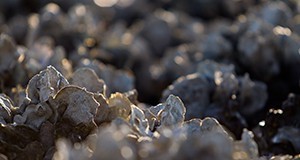Abstract
Florida’s economically important estuaries could be heavily impacted by sea-level rise and altered river flow, both caused by climate change. The resulting higher salinity, or saltiness of the water, could harm plants and animals, alter fish and bird habitat, and reduce the capacity of estuaries to provide such important services as seafood production and the protection of shorelines from erosion. This 6-page fact sheet explains the importance of estuaries, salinity in estuaries, and provides examples of stress from extreme high salinity. Then it explores the projected change in climate that could affect salinity in estuaries, how plants and animals would be affected, mitigating effects, and other impacts of climate change on estuaries. Written by Karl Havens, and published by the UF Department of Sea Grant, June 2015.
References
Doering, P.H., R.H. Chamberlain, and M. McMunigal. 2001. Effects of simulated saltwater intrusions on the growth and survival of wild celery, Vallisneria Americana, from the Caloosahatchee Estuary (South Florida). Estuaries 24: 894-903. https://doi.org/10.2307/1353180
Havens, K.E. 2015. Climate change and the occurrence of harmful microorganisms in Florida's ocean and coastal waters. Florida Sea Grant Program, University of Florida Institute of Food and Agricultural Sciences. http://edis.ifas.ufl.edu/sg136.
Havens, K.E., M. Allen, E. Camp, T. Irani, A. Lindsey, J.G. Morris, A. Kane, D. Kimbro, S. Otwell, W. Pine, and C. Walters. 2013. Apalachicola bay oyster situation report. Florida Sea Grant, University of Florida, TP-200, 30 pp.
IPCC 2013. Working group I contribution to the IPCC fifth assessment report. Climate change 2013: the physical science basis. Intergovernmental Panel on Climate Change.
Lirman, D., and W.P. Cropper, Jr. 2003. The influence of salinity on seagrass growth, survivorship, and distribution within Biscayne Bay, Florida: experimental and modeling studies. Estuaries 26: 131-141. https://doi.org/10.1007/BF02691700
Murray, S.J., P.N. Foster, and I.C. Prentice. 2012. Future global water resources with respect to climate change and water withdrawals as estimated by a dynamic global vegetation model. Journal of Hydrology 448: 14-29. https://doi.org/10.1016/j.jhydrol.2012.02.044
Petes, L.E., A.J. Brown, and C.R. Knight. 2012. Impacts of upstream drought and water withdrawals on the health and survival of downstream estuarine oyster populations. Ecology and Evolution 2: 1712-1724. https://doi.org/10.1002/ece3.291
Phlips, E.J., S. Badylak, J. Hart, D. Haunert, J. Lockwood, K. O-Donnell, D. Sun, P. Viveros, and M. Yilmaz. 2012. Climatic influences on autochthonous and allochthonous phytoplankton blooms in a subtropical estuary, St. Lucie Estuary, Florida, USA. Estuaries and Coasts 35: 335-352. https://doi.org/10.1007/s12237-011-9442-2
Sheffield, J., and E.F. Wood. 2008. Projected changes in drought occurrence under future global warming from multi-model, multi-scenario, IPCC AR4 simulations. Climate Dynamics 31: 79-105. https://doi.org/10.1007/s00382-007-0340-z
Shumway, S. 1996. Natural environmental factors. In: V.S. Kennedy , R.I.E. Newell and A.F. Eble (eds). The Eastern Oyster Crassostrea virginica. Maryland Sea Grant, University of Maryland, College Park, MD, pp. 467-513.
Sime, P. 2005. St. Lucie Estuary and Indian River Lagoon conceptual ecological model. Wetlands 25: 898-907. https://doi.org/10.1672/0277-5212(2005)025[0898:SLEAIR]2.0.CO;2
Wuebbles, D., G. Meehl, K. Hayhoe, T.R. Karl, K. Kunkel, B. Santer, M. Wehner, B. Colle, E.M. Fischer, R. Fu, A. Goodman, E. Janssen, V. Kharin, H. Lee, W. Li, L.N. Long, S.C. Olsen, Z. Pan, A. Seth, J. Sheffield, and L. Sun. 2014. CMIP5 climate model analysis: climate extremes in the United States. Bulletin of the American Meteorological Society 95: 571-583. https://doi.org/10.1175/BAMS-D-12-00172.1
Zieman, J.C., J.W. Fourqurean, and T.A. Frankovich. 1999. Seagrass die-off in Florida Bay: long-term trends in abundance and growth of turtle grass: Thalassia testudinum. Estuaries 22: 460-470. https://doi.org/10.2307/1353211

